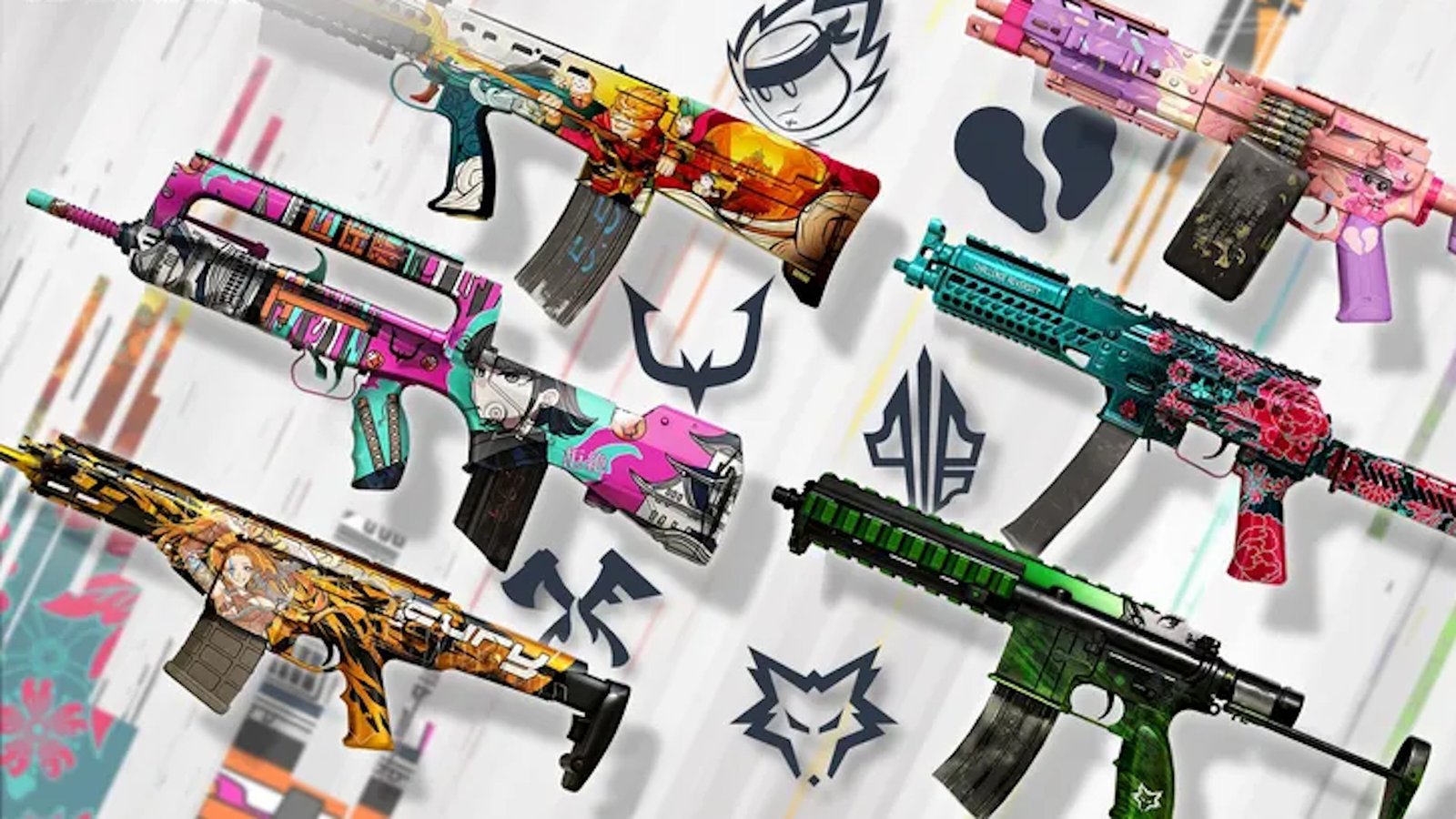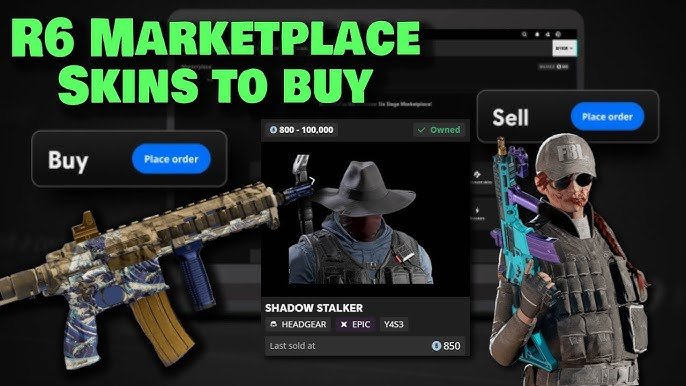Table of Contents
R6 Market, It sounds like you might be referring to the marketplace for Rainbow Six Siege (R6), a popular tactical shooter game by Ubisoft. In the context of R6, the “market” could involve several things:
- In-Game Store: Rainbow Six Siege features an in-game store where players can purchase cosmetics, such as weapon skins, operator outfits, and charms using in-game currency (Renown) or premium currency (R6 Credits).
- Community Marketplaces: Some players use community-driven platforms or forums to buy, sell, or trade in-game items or accounts. Be cautious when engaging in these transactions, as they can sometimes lead to scams or violations of the game’s terms of service.
- Esports and Competitive Scene: The “market” might also refer to the competitive scene surrounding x, including tournaments, sponsorships, and merchandise.
Is R6 Market a Game?
R6 Market is not a game but rather a marketplace associated with the game Rainbow Six Siege. It’s a platform where players can buy, sell, and trade in-game items, particularly those related to cosmetic content like skins and charms. This kind of marketplace can help players acquire items they might not get through normal gameplay or official channels.
How much cost at Rainbow Six Siege
R6 Market, The cost of Rainbow Six Siege can vary based on the edition and any ongoing promotions or sales. As of the latest updates:
- Standard Edition: Generally priced around $20-$30 USD.
- Gold Edition: Includes additional content and is usually priced around $40-$60 USD.
- Ultimate Edition: Offers the most content and is typically priced around $60-$90 USD.
These prices can fluctuate based on sales, bundles, or regional differences. For the most current pricing, it’s best to check platforms like Steam, Ubisoft Store, or other authorized retailers.
Is Rainbow Six Siege skin for real weapons?


 R6 Market, No, the skins in Rainbow Six Siege are purely cosmetic and do not affect the real weapons in any way. They are designed to give a unique look to the weapons in the game, but they don’t change the actual functionality or performance of the weapons. These skins are a popular way for players to personalize their in-game experience.
R6 Market, No, the skins in Rainbow Six Siege are purely cosmetic and do not affect the real weapons in any way. They are designed to give a unique look to the weapons in the game, but they don’t change the actual functionality or performance of the weapons. These skins are a popular way for players to personalize their in-game experience.
How to trade at rainbow six siege
R6 Market, Trading in Rainbow Six Siege is somewhat limited compared to other games, as the official support for trading is minimal. However, you can still manage and trade in-game items through a few unofficial methods and community platforms:
- Third-Party Marketplaces: Websites like R6 Market (r6.market) and others are popular for buying, selling, and trading cosmetic items. Be cautious when using these platforms, as they are not officially endorsed by Ubisoft, and there may be risks involved with transactions.
- Community Groups: Many players use forums, Reddit (e.g., r/Rainbow6), or Discord servers dedicated to Rainbow Six Siege to arrange trades. These communities often have their own rules and guidelines for trading.
- In-Game Events and Promotions: Occasionally, Ubisoft hosts events or promotions that allow players to acquire or trade items in-game. Keep an eye on official announcements for these opportunities.
What cosmetics items are sell buying at Rainbow Six Siege R6 Market
R6 Market, In Rainbow Six Siege, cosmetic items are primarily the focus of buying and selling on third-party marketplaces or trading platforms. Here’s a rundown of the types of cosmetic items you might find:
- Skins: These are designs that alter the appearance of weapons and operators. They include weapon skins, headgear, and uniforms. Skins can range from simple designs to elaborate, themed sets.
- Charms: These are small items that hang from the weapon and are often themed around various events, characters, or in-game elements.
- Operator Sets: Complete cosmetic sets for specific operators, including their uniforms, headgear, and weapon skins.
- Elite Skins: Special, premium skins for operators that often come with unique animations and sound effects. These are usually more sought after and expensive.
- Attachments Skins: Customizations for weapon attachments like grips and scopes, though these are less common.
- Bundles and Collections: Occasionally, entire bundles or collections of cosmetics are sold together. These can include various items like skins, charms, and operator sets.
Keep in mind that while you can buy and sell these items through third-party marketplaces or community channels, it’s essential to exercise caution and verify the legitimacy of the platform or individual you’re dealing with to avoid scams and ensure a safe transaction.
Conclusion of R6 Market
The conclusion of the R6 Market would typically involve summarizing key findings and insights derived from the analysis of the market related to Rainbow Six Siege (R6) or a similar context. Here’s a structured way to conclude such a market analysis:
- Market Overview:
- Growth Trends: Summarize the growth trends in the R6 market, including any recent increases in player base, revenue, or market share.
- Current State: Provide an overview of the current state of the market, including key players, competitive dynamics, and market segmentation.
- Key Findings:
- Consumer Behavior: Highlight important insights about player preferences, spending habits, and engagement levels.
- Competitive Landscape: Outline the major competitors and their strategies, strengths, and weaknesses.
- Revenue Streams: Discuss the primary sources of revenue, such as in-game purchases, DLCs, or esports.
- Opportunities and Challenges:
- Opportunities: Identify emerging opportunities in the market, such as new technological advancements, expanding demographics, or untapped regions.
- Challenges: Address any significant challenges or barriers, such as market saturation, regulatory issues, or shifts in consumer preferences.
- Strategic Recommendations:
- For Developers: Suggest strategies for game developers to capitalize on market opportunities, enhance player engagement, or improve monetization.
- For Investors: Offer recommendations for investors interested in the R6 market, based on current trends and future projections.
- Future Outlook:
- Market Forecast: Provide a forecast for the market’s future, including expected growth rates, potential changes in the competitive landscape, and emerging trends.
- Long-term Trends: Discuss any long-term trends that could influence the market, such as technological innovations or shifts in player demographics.

